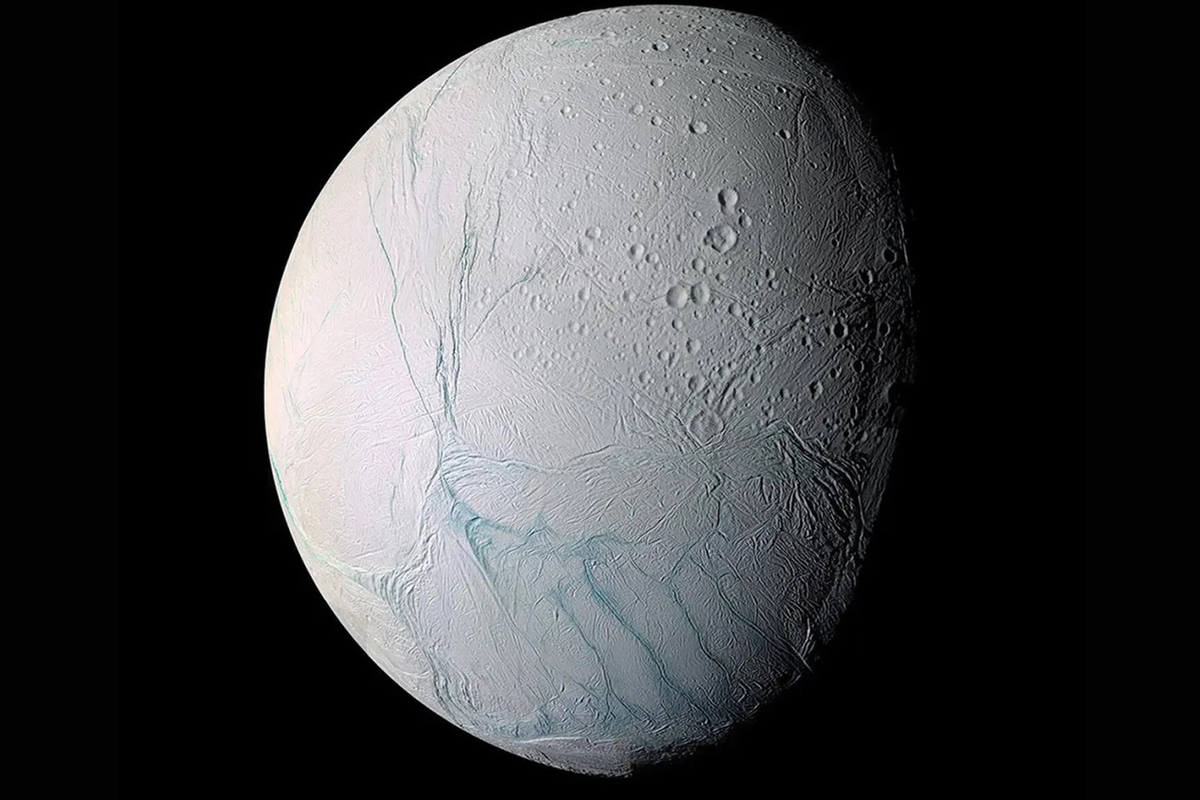Signs of alien life found on Saturn’s moon
[ad_1]

Saturn’s moon may harbor alien life: Scientists have discovered organic molecules in Enceladus’s plume that suggest it could be habitable. Saturn has more than 100 moons, but only Enceladus has an ocean of liquid water. Experts already know that there are phosphates, methane, hydrogen and CO2.
This is one of the most beautiful objects in our solar system: a shimmering sphere of pure white ice hiding a liquid ocean inside, writes the Daily Mail. But despite the fact that Enceladus is not at all similar to our planet, it, the sixth largest satellite of Saturn, may have something in common with Earth – the presence of life.
Scientists have discovered organic molecules in the moon’s plumes that may support “communities” of tiny microbes. Researchers believe these compounds may support their metabolism or amino acid formation.
Experts already know that Enceladus contains phosphates, methane, hydrogen and carbon dioxide – all of which are potential signs of life.
The findings were detailed in a new study led by John Peter, a PhD candidate in biophysics at Harvard University in Boston.
“Here we present the discovery of several additional compounds that are important for the habitability of Enceladus,” say the study authors. “Our results indicate the presence of a rich, chemically diverse environment that could support complex organic synthesis and perhaps even the origin of life.”
Enceladus has an outer layer of ice at least 12 miles thick that covers a liquid ocean of water inside. Long, snake-like cracks on its icy surface release huge jets of ice grains and water vapor into space, writes the Daily Mail. At least some of these plumes are believed to be frozen drops of a mysterious liquid ocean – perhaps an untapped underwater abyss teeming with life forms.
Before ending its mission in 2017, NASA’s Cassini spacecraft not only photographed Enceladus’ plumes, but also flew right through them. Together with his colleagues, John Peter studied data from the Cassini Ion and Neutral Mass Spectrometer (INMS) collected during flights in 2011 and 2012.
The team used a statistical analysis technique that analyzed billions of potential plume material compositions. Based on this, they determined that the most likely composition of the plumes was the five molecules already identified – water, carbon dioxide, methane, ammonia and molecular hydrogen.
The fact that Saturn’s moon spews methane gas is exciting because it is an organic molecule typically produced or used by microbial life. The presence of methane in these plumes has led scientists to hypothesize that microbes may be living, or once lived, beneath Enceladus’s shell.
But the authors also found newly identified molecules of hydrogen cyanide (HCN), acetylene (C2H2), propylene (C3H6) and ethane (C2H6), as well as traces of alcohol (methanol) and molecular oxygen.
“Such compounds could serve as direct substrates for biological growth or mediate other metabolic reactions involving additional organic substances and oxidants,” the scientists say.
The authors note that the ability of these compounds to support life on Enceladus depends largely on how dilute they can be in the subsurface ocean of Saturn’s moon. But the team hopes that a complex and diverse “hydrothermal environment” exists beneath the moon’s icy outer shell, likely on the ocean floor.
The presence of acetylene and ethane in the plume also implies “ongoing catalytic reactions” driven by metal-bearing minerals in the ocean.
One day, experts will make every possible guess about Enceladus based on Cassini data – at which point further missions will be required, the Daily Mail notes. Most likely, another spacecraft could determine for sure whether life exists on Enceladus. Until then, science fiction writers will no doubt be inspired by the unique geological formation of this icy world, located 313 million miles from humanity. “A more detailed study of Enceladus’s oceanic material will require future robotic missions,” the study authors conclude. The full results were published in Nature Astronomy.
[ad_2]
Source link








